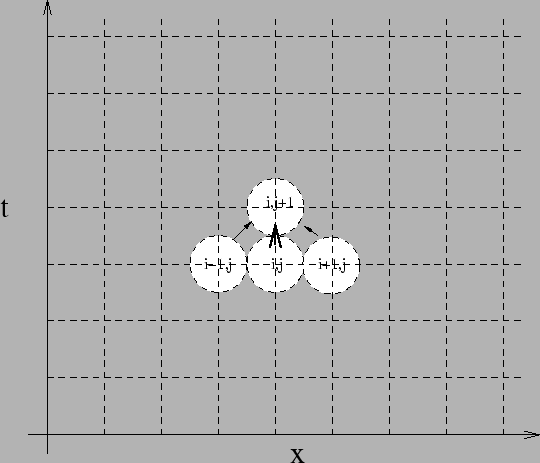


Next: Exercise 6.1: Finite differences
Up: Heat Flow
Previous: Heat Flow
Figure 14:
The finite differences algorithm for the heat equation.
 |
The numerical solution is based on converting the differential equation into an
approximate finite-diffence one. Following a derivation similar to the
one we used for the wave equation we approximate the derivatives by finite
differences:
Replacing in 66 we obtain the discrete equivalent:
![\begin{displaymath}
T(x,t+\Delta t)=T(x,t)+\frac{\alpha}{C}\left[T(x+\delta x,t)+T(x-\Delta x,t)
-2T(x,t) \right],
\end{displaymath}](img592.png) |
(71) |
with the constant
 .
We see in Fig. 14 that the temperature at the point
.
We see in Fig. 14 that the temperature at the point
 is determined by the temperatures at three points of the
previous time step. The boundary conditions impose fixed values along the
perimeter. The initial condition 67 is used to generate the
temperature gradient at time
is determined by the temperatures at three points of the
previous time step. The boundary conditions impose fixed values along the
perimeter. The initial condition 67 is used to generate the
temperature gradient at time  , and the equation is used for the time evolution.
, and the equation is used for the time evolution.
The stability condition for a numerical solution is iven by
 |
(72) |
This means that if we make the time step smaller we improve convergence, but
if we decrease the space step without a simultaneous quadratic increase of the
time step, we worsen it.
Subsections



Next: Exercise 6.1: Finite differences
Up: Heat Flow
Previous: Heat Flow
Adrian E. Feiguin
2004-06-01



